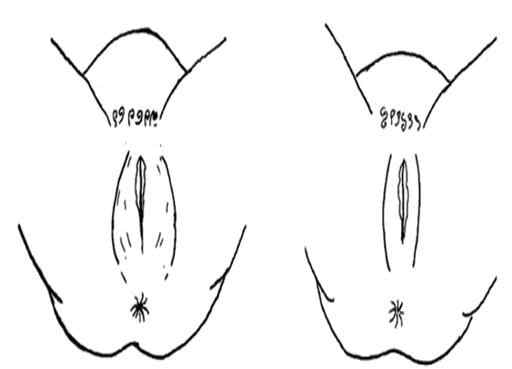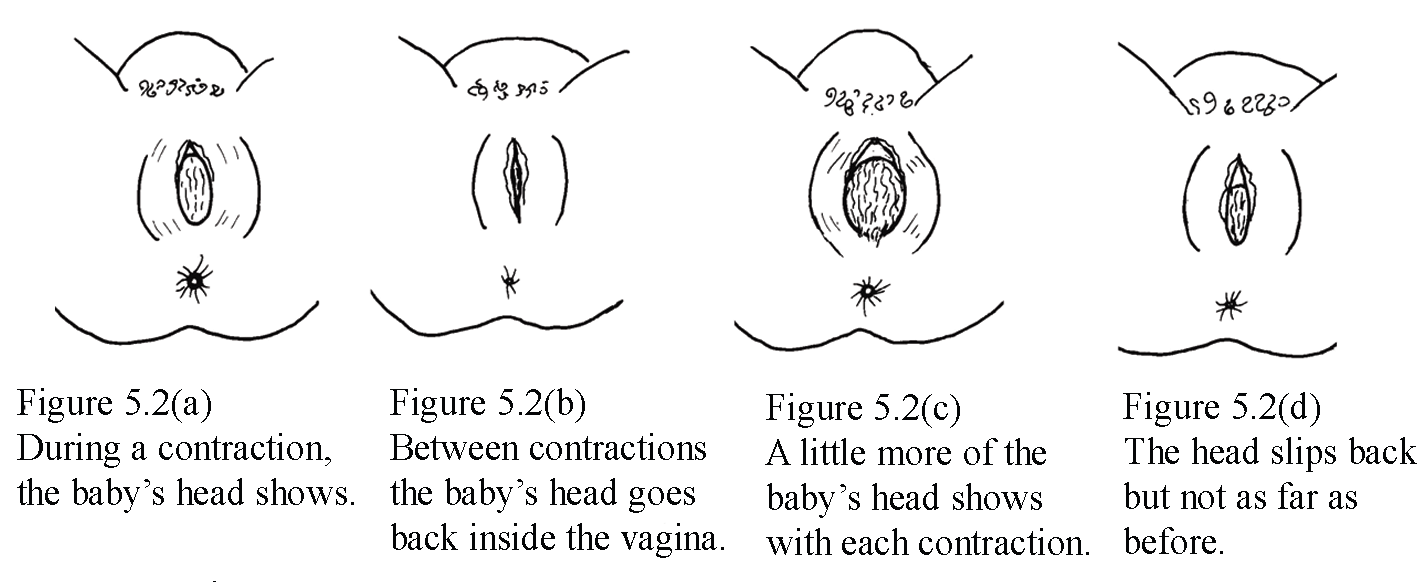
The second stage of labour is from full dilatation of cervix until delivery of the fetus. The duration of the second stage of labour is therefore based on the time you diagnose the mother as being fully dilated.
The full dilatation of the cervix is a positive sign in diagnosing the second stage of labour. The vaginal examination can certain you the level of opening of the cervix. Note that the frequent vaginal examination can cause infection for the mother and the fetus. So you should perform the vaginal examination in 4 hours intervals. But conditions may invite you to do vaginal examination before 4 hours. Some of these conditions are:
What happens during the second stage of labour?
During the second stage of labour, when the baby is high in the vagina, you can see the mother‘s genitals bulge during contractions, her anus opens a little between contractions, and her genitals relax between contractions (Fig. 4.1 below).

Between contractions, the mother‘s uterus relaxes and pulls the baby back up a little and when there is contraction she pushes the presenting part down, and you can see a little of the baby‘s head coming down the vagina during contractions. The baby moves like an ocean wave: in and out, but each time closer to birth (Figure. 4.2 A-D).

Mechanism of the second stage of labour
The mechanism of labour refers to a series of movements made by the fetus through the birth canal. The babies move this way if they are positioned head-first, but many fetuses do not face this way (Figure 4.3). You have learned in detail the mechanism of normal labour in section 2.
